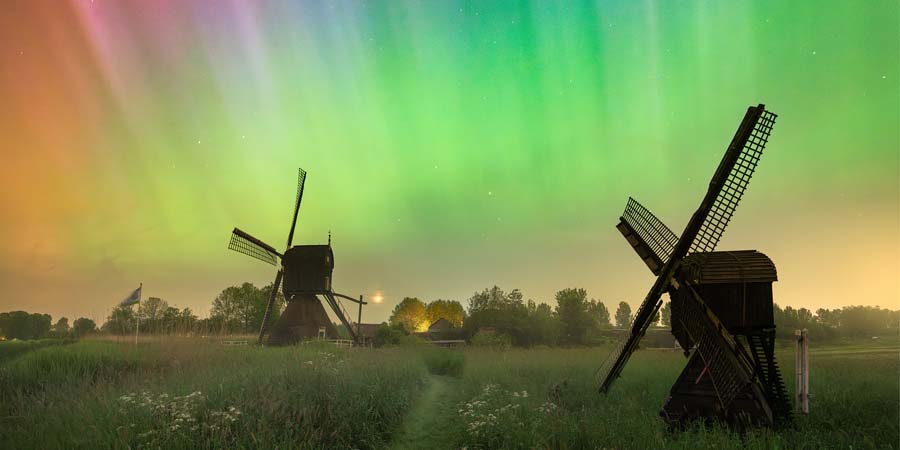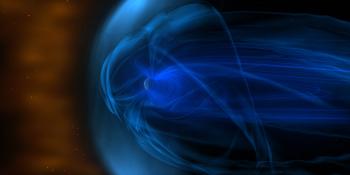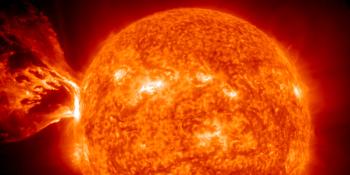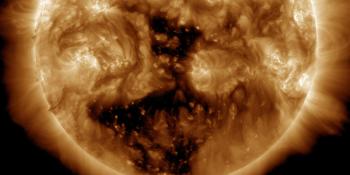Strongest geomagnetic storm since 2003, X5.8 solar flare
Saturday, 11 May 2024 13:08 UTC

The geomagnetic storm that commenced yesterday will go down in the record books as the strongest geomagnetic storm since the Halloween Solar Storms of 2003. The May 2024 storms thus far peaked at a Dst of -412 nT.
The Disturbance Storm Time (Dst) index is a measure of geomagnetic activity used to assess the severity of geomagnetic storms. It is expressed in nanoTeslas and is based on the average value of the horizontal component of the Earth's magnetic field measured at four near-equatorial geomagnetic observatories. It measures the growth and recovery of the ring current in the Earth's magnetosphere. The lower these values get, the more energy is stored in Earth's magnetosphere. It is commonly used to indicate the severity of geomagnetic storms that reach the extreme G5 geomagnetic storm level.
Which coronal mass ejections have arrived and which have yet to pass is anyone's guess. But this is far from over. We remain in a magnetic cloud with a steady southward Bz component of the interplanetary magnetic field causing continues severe G4 geomagnetic storm conditions and even the occasional excursion to extreme G5 conditions.
Fun fact, we actually almost beat the Dst record of the Halloween Solar Storms of 2003 which peaked at -422 nT. If we get yet another period with extreme solar wind and interplanetary magnetic field values we might just smash the record from 2003 and if that occurs this would be the strongest geomagnetic storm in 35 years, since the "Quebec power blackout" March 1989 geomagnetic storm.
Locations all over the world like England, Germany, Hungary, Austria, New Zealand, Australia and even US states as far south as Florida manage to see aurora during the past 18 hours or so. We have seen so many amazing pictures and videos from all around the world and are extremely happy so many of you got to see aurora from where you live and that our server of course didn't buckle under the extreme traffic that we welcomed today and yesterday! Thank you!
X5.8 solar flare
Midst among the excitement of the very first extreme G5 geomagnetic storm since 2003, sunspot region 3664 continued doing what it is best at: producing major solar flares.
It produced it's strongest solar flare thus far and the second strong solar flare of the current Solar Cycle. An X5.8 solar flare that peaked at 01:23 UTC. Yet another asymmetrical full halo coronal mass ejection was launched with a likely earth-directed component. We're in for a couple of more days with stormy space weather!
Midst among the excitement of the very first Extreme G5 geomagnetic storm since 2003, sunspot region 3664 continued doing what is is best at: producing major solar flares. It produced it's strongest solar flare thus far and the second strong solar flare of the current Solar… pic.twitter.com/G4ImkAr42j
— SpaceWeatherLive (@_SpaceWeather_) May 11, 2024
Header image: Aurora Borealis captured last night by Albert Dros (website) from the Netherlands.
Thank you for reading this article! Did you have any trouble with the technical terms used in this article? Our help section is the place to be where you can find in-depth articles, a FAQ and a list with common abbreviations. Still puzzled? Just post on our forum where we will help you the best we can!
Latest news
Latest forum messages
Support SpaceWeatherLive.com!
A lot of people come to SpaceWeatherLive to follow the Sun's activity or if there is aurora to be seen, but with more traffic comes higher server costs. Consider a donation if you enjoy SpaceWeatherLive so we can keep the website online!

Space weather facts
| Last X-flare | 2025/03/28 | X1.1 |
| Last M-flare | 2025/04/15 | M1.2 |
| Last geomagnetic storm | 2025/04/16 | Kp8- (G4) |
| Spotless days | |
|---|---|
| Last spotless day | 2022/06/08 |
| Monthly mean Sunspot Number | |
|---|---|
| March 2025 | 134.2 -20.4 |
| April 2025 | 120.5 -13.7 |
| Last 30 days | 116.6 -25.7 |


